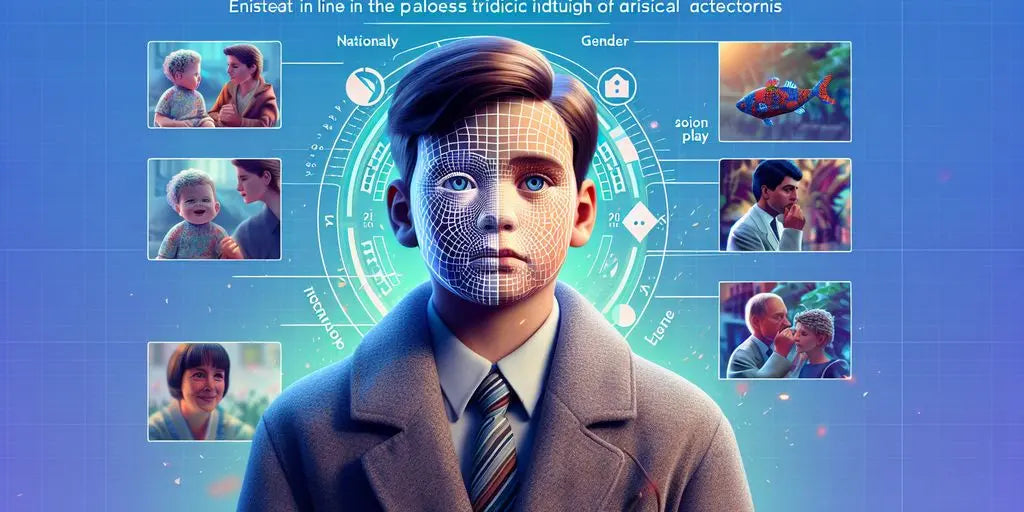Autism Diagnosis: Understanding the DSM-5 Criteria

Understanding the DSM-5 diagnostic criteria for autism is essential for individuals seeking a diagnosis, as well as for professionals involved in the evaluation and support of individuals with autism. It provides a standardized and reliable framework that aids in accurate identification, early intervention, and access to appropriate resources.
Key Takeaways
- The DSM-5 provides a standardized framework for diagnosing autism spectrum disorder (ASD).
- Early intervention and access to resources are facilitated by accurate diagnosis using DSM-5 criteria.
- Social communication deficits and restricted, repetitive behaviors are core components of the DSM-5 criteria for ASD.
- Clinicians use a comprehensive evaluation process, incorporating clinical judgment and an interdisciplinary approach.
- Critiques and controversies exist regarding the DSM-5 criteria, including debates on diagnostic thresholds and cultural sensitivity issues.
Understanding the DSM-5 Diagnostic Criteria for Autism
Understanding the DSM-5 diagnostic criteria for autism is essential for individuals seeking a diagnosis, as well as for professionals involved in the evaluation and support of individuals with autism. It provides a standardized and reliable framework that aids in accurate identification, early intervention, and access to appropriate resources.
Importance of Standardized Framework
The DSM-5 diagnostic criteria for Autism Spectrum Disorder (ASD) provide clinicians with a standardized framework for assessing and diagnosing individuals with autism. This framework ensures consistency and accuracy in diagnosis, which is crucial for effective treatment planning.
Role in Early Intervention
Early intervention is key to improving outcomes for individuals with autism. By using the DSM-5 criteria, professionals can identify autism at an early stage, allowing for timely and appropriate interventions that can significantly enhance development and quality of life.
Access to Resources
Meeting the DSM-5 criteria for autism diagnosis can open doors to various resources and support systems. These may include educational programs, therapeutic services, and community support networks, all of which are vital for the well-being and development of individuals with autism.
The DSM-5 criteria not only help in accurate diagnosis but also play a crucial role in guiding interventions and accessing necessary resources, making it an indispensable tool in the field of autism diagnosis.
Social Communication and Interaction Deficits
Identifying Communication Challenges
Children with autism often face significant challenges in communication. These can range from difficulties in initiating or maintaining conversations to a reduced ability to share interests or emotions. Deficits in social-emotional reciprocity are common, making it hard for them to engage in typical back-and-forth interactions. This can manifest as a failure to initiate or respond to social interactions, impacting their ability to form meaningful connections.
Understanding Social Reciprocity
Social reciprocity involves the give-and-take of social interactions, which is often impaired in individuals with autism. They may struggle with understanding and responding to social cues, leading to awkward or inappropriate social approaches. This deficit can make it challenging for them to develop and maintain relationships, as they may not respond in expected ways during social exchanges.
Nonverbal Communication Issues
Nonverbal communication is another area where children with autism may experience difficulties. This includes challenges with eye contact, facial expressions, and body language. Poorly integrated verbal and nonverbal communication can make social interactions even more complex. For instance, they might not use gestures effectively or may have an unusual tone of voice, further complicating their ability to communicate. Additionally, some may engage in visual stimming, which can be misunderstood by others.
Understanding these deficits is crucial for early intervention and tailored support, helping children with autism navigate their social world more effectively.
Restricted and Repetitive Behaviors
Restricted and repetitive behaviors are a hallmark of autism. These behaviors can manifest in various ways, such as stereotyped or repetitive motor movements, use of objects, or speech. Examples include simple motor stereotypes, lining up toys, flipping objects, echolalia, and idiosyncratic phrases.
Individuals with autism often exhibit fixated interests that are abnormal in intensity or focus. These interests can range from an intense fascination with specific topics to a need for rigid routines. This insistence on sameness can lead to extreme distress at small changes, difficulties with transitions, and rigid thinking patterns.
Sensory sensitivities are another common aspect of autism. Individuals may be hyper- or hypo-reactive to sensory input, such as sounds, lights, or textures. This can result in either seeking out or avoiding certain sensory experiences, impacting daily life and comfort.
Understanding these behaviors is crucial for providing appropriate support and interventions for individuals with autism.
Criteria for Autism Diagnosis
To receive an autism diagnosis, an individual must exhibit persistent deficits in social communication and social interaction. These deficits can vary in severity and significantly impact daily functioning. Understanding these specific diagnostic criteria is crucial for accurate diagnosis and appropriate intervention.
Individuals must also display restricted, repetitive patterns of behavior, interests, or activities. This includes behaviors like stimming, insistence on sameness, and fixated interests. The severity of these behaviors can range from mild to severe.
- Symptoms must be present since childhood.
- The degree to which autism affects daily functioning is considered.
- Traits should not be better explained by intellectual disability.
Harnessing autistic strengths to create Pokémon is an example of how unique interests can be channeled into creative endeavors. The autism store offers various autism-themed products like wall art, tees, puzzles, hats, and journals, promoting creativity and awareness in autism decor.
Role of Clinicians in Diagnosis
Comprehensive Evaluation Process
Clinicians play a pivotal role in the autism diagnosis process. A thorough evaluation is essential to ensure an accurate diagnosis. This involves multiple steps, including detailed medical history, behavioral observations, and standardized assessments. The goal is to gather comprehensive information to understand the individual's unique profile.
Interdisciplinary Approach
An effective diagnosis often requires an interdisciplinary approach. This means involving professionals from various fields such as psychology, speech therapy, and occupational therapy. Each specialist provides valuable insights, contributing to a holistic understanding of the individual's needs.
Importance of Clinical Judgment
While standardized tools are crucial, the clinician's judgment is equally important. Experienced clinicians can interpret subtle signs and symptoms that may not be captured by assessments alone. Clinical judgment ensures that the diagnosis is tailored to the individual's specific circumstances.
Clinicians must balance objective data with their professional expertise to provide the most accurate diagnosis possible.
Critiques and Controversies
The DSM-5 diagnostic criteria for autism, while widely accepted, are not without their critiques and controversies. Understanding these concerns can provide a more comprehensive perspective on the diagnostic process.
Early Signs of Autism
Developmental Milestones
Autism is a neurodevelopmental disorder that typically becomes apparent in the first few years of life. While the specific age at which symptoms become evident can vary, it is generally recognized that the signs of autism emerge during early childhood. These signs may include difficulties with social communication, repetitive behaviors, and sensory sensitivities.
Parental Observations
It is important to note that the age of onset for autism can vary from person to person. Some individuals may exhibit symptoms as early as infancy, while others may not show noticeable signs until later in toddlerhood. However, for a formal diagnosis of autism, it is necessary for symptoms to have been present during the early developmental period.
Screening Tools
To be diagnosed with autism spectrum disorder, children must have difficulties and/or differences from what’s typical in the area of social communication. Signs in this area include:
- Difficulties in social communication
- Repetitive behaviors
- Sensory sensitivities
Early identification of autism can lead to timely interventions, which are crucial for improving outcomes.
Learn about screening tools and questionnaires that can help in identifying early signs of autism.
Impact of Accurate Diagnosis
Tailored Interventions
An accurate autism diagnosis is the cornerstone for developing tailored interventions. These interventions are designed to meet the unique needs of each individual, enhancing their ability to navigate daily life. By understanding the specific challenges and strengths of a person with autism, professionals can create personalized strategies that promote growth and development.
Educational Planning
Accurate diagnosis plays a crucial role in educational planning. It allows educators to implement appropriate accommodations and modifications, ensuring that students with autism receive the support they need to succeed academically. This can include specialized teaching methods, assistive technologies, and individualized education programs (IEPs).
Family Support
For families, an accurate diagnosis provides clarity and direction. It helps them understand their loved one's needs and access the necessary resources and support systems. This can significantly reduce stress and improve the overall quality of life for both the individual with autism and their family members.
Accurate diagnosis is not just about labeling; it's about unlocking potential and providing a roadmap for success.
Updates and Revisions in DSM-5
The DSM-5, released in May 2013, marked a significant shift in the diagnostic criteria for autism. Its primary goal is to ensure that clinicians have a common language and framework when diagnosing and treating individuals with mental health disorders. In 2022, the APA released the DSM-5-TR, a text revision to the DSM-5, which included a clarification to the autism diagnostic criteria. Specifically, the phrase “manifested by the following” was revised to read “as manifested by all of the following” to improve the intent and clarity of the wording.
Global Perspectives on Autism Diagnosis
International Diagnostic Criteria
Autism diagnosis varies significantly across the globe. Different countries adopt various diagnostic criteria, which can lead to inconsistencies. Understanding these differences is crucial for professionals working in international contexts. The DSM-5 is widely used in the United States, while other countries may rely on the ICD-10 or their own national guidelines.
Cross-Cultural Comparisons
Cultural factors play a significant role in how autism is perceived and diagnosed. In some cultures, behaviors associated with autism may be interpreted differently, affecting the likelihood of diagnosis. This highlights the importance of cultural sensitivity in the diagnostic process. Professionals must be aware of these nuances to provide accurate assessments.
Global Initiatives
There are numerous global initiatives aimed at standardizing autism diagnosis and improving access to resources. Organizations like the WHO and Autism Speaks are working towards creating a more unified approach. These efforts are essential for ensuring that individuals with autism receive the support they need, regardless of where they live.
By exploring creativity and awareness in autism wall art products, we can better understand the diverse needs of individuals with autism worldwide.
Resources for Families and Individuals
Support Networks
Navigating the world of autism can be challenging, but support networks provide a lifeline for families and individuals. These networks offer emotional support, practical advice, and a sense of community. From local support groups to online forums, there are numerous ways to connect with others who understand the journey.
Educational Resources
Access to quality educational resources is crucial for individuals with autism. These resources range from specialized learning materials to comprehensive training programs for educators and caregivers. Videos, visual supports, and family early intervention resource cards are just a few examples of the tools available to aid in learning and development.
Therapeutic Options
Therapeutic options are essential for addressing the diverse needs of individuals with autism. These can include speech therapy, occupational therapy, and behavioral interventions. Financial resources are often available to help cover the costs of these therapies, ensuring that everyone has access to the support they need.
Autism-themed products and resources for caregivers and individuals with autism can significantly enhance the quality of life and provide much-needed assistance in daily activities.
Conclusion
Understanding the DSM-5 diagnostic criteria for autism is essential for individuals seeking a diagnosis, as well as for professionals involved in the evaluation and support of individuals with autism. It provides a standardized and reliable framework that aids in accurate identification, early intervention, and access to appropriate resources. By adhering to these criteria, professionals can make comprehensive evaluations, ensuring that individuals with autism receive the support and interventions they need to thrive. Despite some critiques and controversies, the DSM-5 remains a crucial tool in the field of autism diagnosis, helping to demystify the condition and promote better outcomes for those affected.
Frequently Asked Questions
What is the DSM-5 and why is it important for autism diagnosis?
The DSM-5, or Diagnostic and Statistical Manual of Mental Disorders, Fifth Edition, is a widely recognized diagnostic tool used by clinicians and researchers to classify and diagnose various mental health conditions, including autism spectrum disorder (ASD). It provides a standardized and reliable framework that aids in accurate identification, early intervention, and access to appropriate resources.
What are the main criteria for an autism diagnosis according to the DSM-5?
The DSM-5 outlines several criteria that must be met to receive an autism diagnosis. These include persistent deficits in social communication and interaction, restricted and repetitive behaviors, and other additional considerations such as the severity of symptoms and their impact on daily functioning.
How do social communication deficits manifest in individuals with autism?
Social communication deficits in individuals with autism can include challenges in understanding and using verbal and nonverbal communication, difficulties in social reciprocity, and trouble developing and maintaining relationships.
What types of restricted and repetitive behaviors are associated with autism?
Restricted and repetitive behaviors in autism can include repetitive movements, strict adherence to routines, fixated interests, and sensory sensitivities. These behaviors can vary widely in their nature and intensity among individuals with autism.
Why is early intervention important for individuals with autism?
Early intervention is crucial for individuals with autism as it can significantly improve their developmental outcomes. Early support can help address communication challenges, improve social skills, and reduce the severity of restrictive and repetitive behaviors.
How do clinicians conduct a comprehensive evaluation for autism diagnosis?
Clinicians use a comprehensive evaluation process that includes clinical observations, standardized assessments, and input from parents and caregivers. An interdisciplinary approach involving various specialists ensures a thorough and accurate diagnosis.
What are some critiques and controversies surrounding the DSM-5 criteria for autism?
Critiques and controversies include debates on the diagnostic thresholds, concerns about cultural sensitivity, and the impact of the criteria on access to services. Some argue that the criteria may not fully capture the diversity of the autism spectrum.
What resources are available for families and individuals affected by autism?
There are various resources available, including support networks, educational materials, and therapeutic options. These resources aim to provide guidance, support, and interventions to improve the quality of life for individuals with autism and their families.



